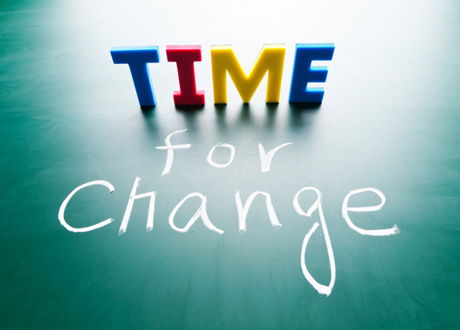By: Lisa Bodell
Why do so many corporations operate under the assumption that change initiatives must come from the top down? Mandated change is often out of touch with the everyday work of employees, so it’s met with resistance as they immediately anticipate the additional work these programs entail.
When I speak at conferences and ask my audience if it’s open to change, everyone raises their hands. ‘How many of you have been through a change initiative at your company in the last five years?’ Again, the majority of hands go up. When I ask how many think it worked, the number of raised hands is now, a handful. People are tired of being asked to change or innovate: in fact, “change” is now a dirty word inside organizations.
The most effective approach to lasting change doesn’t start or end in the C-suite. While executives have to support it, real momentum happens a few levels deeper—at the middle. It doesn’t happen in a boardroom; it happens in status meetings, team gatherings, and day-to-day interactions.How is this different, and what makes it last? My book, Kill the Company, outlines some simple, client-tested principles for creating long-term change within your organization:
Everyone is a Change Agent. Vision should not be the sole responsibility of leadership, and neither should change. People want to be in control of their work, so when you empower them to shape change, they’re much more likely to join your efforts. Leaders can, and should, set the direction and place the big bets. But we need to think differently about what mid-level people can accomplish and how they can be visionaries and problem-solvers in their own right. Innovation thrives at companies where leaders lead, managers have the freedom to think and experiment, and everyone is expected to help take the business to new places.
Resist the urge to grip the reins tightly, and instead, create guardrails through tools and behaviors.
Tools, not Process. Different functions or business units often have their own micro-cultures and very different ways of working. This is why one-size-fits all change programs are unsuccessful. Teams need on-demand tools to break down barriers, kill rules, and challenge assumptions—not a 50-slide PowerPoint deck on “Change.” They need enough direction to know where the ship is headed, but also the freedom to interpret and apply directives to their own work. Resist the urge to grip the reins tightly, and instead, create guardrails through tools and behaviors.
Little Changes, Big Impact. Change sticks when leaders actually model the behavior, not mandate it. We advocate Little BIGS: small, unexpected things or behavior changes that make people notice that something’s different. To encourage brainstorming not blamestorming, inject positive inquiry techniques into discussions—in what ways might we do X?—instead of defensive language. Or demonstrate trust in your teams’ judgment by asking them to make three decisions a week without your approval. Designate an employee to root out departmental inefficiencies, no matter how small, and give her the power to eliminate them. As people at all levels are encouraged to provoke change, they will effectively influence their peers in subtle but far-reaching ways.
Change isn’t easy, but one-size-fits-all change is a pipe dream.
Change isn’t easy, but one-size-fits-all change is a pipe dream. Rather than forcinga 12-step program upon managers and employees, these principles empower people to be problem-solvers and visionaries. Mine their expertise about where change is most needed—and give them a flexible toolkit they can use for the long-term. Make little changes with big impacts, adapting and adjusting as needed, and witness the ripple effect throughout your organization. When you give employees the ability to contribute and shape their future, you set the stage for a powerful groundswell of sustained change.
By Lisa Bodell
About the Author
 Lisa Bodell is the founder and CEO of futurethink, an internationally recognized innovation research and training firm that helps businesses embrace change and become world-class innovators. She has devised training programs for hundreds of innovators at leading companies such as 3M, GE, and Johnson & Johnson. She is also the author of provocative culture change book, Kill the Company: End the Status Quo, Start an Innovation Revolution.
Lisa Bodell is the founder and CEO of futurethink, an internationally recognized innovation research and training firm that helps businesses embrace change and become world-class innovators. She has devised training programs for hundreds of innovators at leading companies such as 3M, GE, and Johnson & Johnson. She is also the author of provocative culture change book, Kill the Company: End the Status Quo, Start an Innovation Revolution.
Photo: Time for change from shutterstock.com

